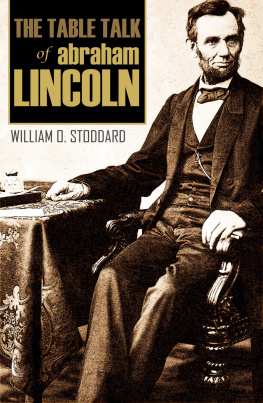Lothrop Stoddard - The French Revolution in San Domingo
Here you can read online Lothrop Stoddard - The French Revolution in San Domingo full text of the book (entire story) in english for free. Download pdf and epub, get meaning, cover and reviews about this ebook. year: 1914, publisher: Houghton Mifflin, genre: Science. Description of the work, (preface) as well as reviews are available. Best literature library LitArk.com created for fans of good reading and offers a wide selection of genres:
Romance novel
Science fiction
Adventure
Detective
Science
History
Home and family
Prose
Art
Politics
Computer
Non-fiction
Religion
Business
Children
Humor
Choose a favorite category and find really read worthwhile books. Enjoy immersion in the world of imagination, feel the emotions of the characters or learn something new for yourself, make an fascinating discovery.
- Book:The French Revolution in San Domingo
- Author:
- Publisher:Houghton Mifflin
- Genre:
- Year:1914
- Rating:3 / 5
- Favourites:Add to favourites
- Your mark:
- 60
- 1
- 2
- 3
- 4
- 5
The French Revolution in San Domingo: summary, description and annotation
We offer to read an annotation, description, summary or preface (depends on what the author of the book "The French Revolution in San Domingo" wrote himself). If you haven't found the necessary information about the book — write in the comments, we will try to find it.
The French Revolution in San Domingo — read online for free the complete book (whole text) full work
Below is the text of the book, divided by pages. System saving the place of the last page read, allows you to conveniently read the book "The French Revolution in San Domingo" online for free, without having to search again every time where you left off. Put a bookmark, and you can go to the page where you finished reading at any time.
Font size:
Interval:
Bookmark:
BY
The worldwide struggle between the primary races of mankind the conflict of color as it has been happily termed bids fair to be the fundamental problem of the twentieth century and great communities like the United States of America, the South African Confederation, and Australasia regard the color question as perhaps the gravest problem of the future. To our age, therefore, the French Revolution in San Domingo the first great shock between the ideals of white supremacy and race equality, which erased the finest of European colonies from the map of the white world and initiated that most noted attempt at negro self-government, the black republic of Haiti cannot but be of peculiar interest.
Strangely enough, the real story of this tremendous racial and social cataclysm has never been told, and it is to fill this gap in the history of modern times that this book has been written. For, be it noted, in this field, the race question, important though it be, is not the sole noteworthy element. San Domingo in 1789 was the most striking example of French colonial genius, and the struggle of the colonys formative ideas with the new political, economic, and social conceptions of the French Revolution is of great importance to the history of European colonization. The attempt to apply the Revolutionary ideals to an environment so radically different from that of France yields a most valuable side-light to the study of the French Revolution itself, while the attempt made under the Consulate to restore French authority and economic prosperity to San Domingo is one of the most illuminating episodes in the career of the master-figure of the age Napoleon Bonaparte.
The keynote to the history of the French Revolution in San Domingo is a great tragedy, the tragedy of the annihilation of the white population. The period opens in 1789 with a resident white population of nearly 40,000 souls, at the very pinnacle of material prosperity and possessed of a complex social organization, jealously guarding its supremacy and race identity in face of a large caste of half-breeds whose only bond of interest with their white superiors was a common exploitation of some half-million negro slaves. The period closes sixteen years later with the complete annihilation of the last remnants of the white population, the subordination of the mulatto caste to the negroes and the destruction of the islands economic prosperity.
In this grim tragedy the chief figure is that of the black leader Toussaint LOuverture. Unfortunately it seems improbable that the mists enveloping his personality will ever be cleared away. Extremely little first-class material exists, and practically everything written about him is of such doubtful value that his figure seems destined to remain forever shrouded in the haze of legend and tradition.
Excluding my five opening chapters of an introductory nature, describing the condition of San Domingo in 1789, the body of the work falls under two main heads. The first of these is the downfall of white supremacy, brought about by internal dissensions, by the revolt of the mulattoes and negroes, and by the vigorous determination of Revolutionary France to destroy the colonial ideals of slavery and the color line. This culminates in the general collapse of white authority in the year 1793. The second main heading of the book is the progress of black supremacy, personified in the career of Toussaint LOuverture. After seven years of constant struggle this supremacy becomes absolute; the English invaders are expelled, the mulattoes crushed, the Spanish portion of the island overrun, and French authority reduced to a vain shadow. By the year 1800, Toussaint LOuverture is absolute master of San Domingo. But his power is short-lived. France is now under the First Consul Bonaparte, and the peace with England in 1801 frees his hands for the restoration of San Domingo to France. Under the shock of Leclercs expedition Toussaints power collapses, and though the complete conquest of San Domingo is delayed by yellow fever and Napoleons restoration of slavery, the French triumph is averted only by the renewal of the struggle between France and England in 1803. The English war is, however, fatal to the French cause. Within a year the island is completely lost, and shortly afterward the last French colonists are exterminated by the negro leader Dessalines. White San Domingo has become only a memory, and the black State of Haiti makes its appearance in the worlds history.
Of the source-materials for the present work, by far the richest collections are those preserved in the French archives, a full description of which may be found in the appended bibliography. It is almost certain that no archival material remains in San Domingo itself. Toussaints papers were captured by the French in 1802, and but few documents can have survived the century of civil strife which sums up Haitis turbulent history. The printed material on San Domingo is extensive. From the earliest times the island attracted attention, the first writers on San Domingo being learned ecclesiastics. As early as 1783 the Jesuit Charlevoix published a four-volume history of the island, based upon still earlier unpublished writings. After the Seven Years War (1763), San Domingo was by far the most important French colony, and the lively interest displayed by French thought on political and economic questions resulted in a considerable number of writings concerning the island. This growing literature was soon swelled by the humanitarian antislavery agitation which began to be noticeable after 1770. The outbreak of the French Revolution saw a flood of books, pamphlets, and brochures of every description and shade of opinion upon colonial questions in general and San Domingo in particular, and the intensity of output continues till the year 1798, when it sharply declines owing to the repressive influence of the Terror. The revived interest in colonial affairs under Bonaparte and the prospects of a restoration of white authority in San Domingo called forth a large number of writings from exiled colonists, while Leclercs expedition resulted in several accounts by officers and civilians. The years following the Bourbon restoration in 1814 saw a series of writings by exiled colonists similar to that following the establishment of the Consulate in 1799, noted above; for France had not renounced her claims on San Domingo and many persons hoped that the Bourbons would follow Napoleons example after the Peace of Amiens, now that the general pacification of 1815 had again given the French fleets the freedom of the sea. When this hope was seen to be a vain one, however, interest in San Domingo died away. The few writings on the island during the years preceding the final abolition of slavery in the French colonies in 1848 are of little value. Of late years the subject has been touched upon by modern writers on the Old Rgime and on Napoleon, while some twenty-five years ago an American writer (Mills) wrote a scholarly treatise directly on the first two years of the French Revolution in San Domingo, though he did not utilize any of the unpublished archival material. Critical notices upon all the important books in this field may be found in the appended bibliography. In closing I desire to express my profound appreciation to all those who have so kindly assisted me in my work; especially, to Professor A. C. Coolidge, of Harvard University, the inspirer of the present volume; to Professors R. M. Johnston and R. B. Merriman, of Harvard University, for their suggestions on certain parts of the book; and to Messrs. Waldo G. Leland and Abel Doysi, of the Carnegie Bureau for Historical Research, for their assistance in my French archival researches. I desire also to express my appreciation of the privileges extended me by the Library of Harvard University, which so greatly facilitated my examination of printed material.
Font size:
Interval:
Bookmark:
Similar books «The French Revolution in San Domingo»
Look at similar books to The French Revolution in San Domingo. We have selected literature similar in name and meaning in the hope of providing readers with more options to find new, interesting, not yet read works.
Discussion, reviews of the book The French Revolution in San Domingo and just readers' own opinions. Leave your comments, write what you think about the work, its meaning or the main characters. Specify what exactly you liked and what you didn't like, and why you think so.











